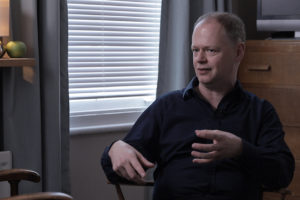Greek and Roman Meteorology
Historian and Philosopher of Science Liba Taub on the relations between myths and science, the ancient attempt...
I’m involved in a spacecraft mission called JUICE: horrible name which stands for Jupiter Icy Moon Explorer. JUICE is going to be launched in 2022 and it’s going to travel out to Jupiter which will take 8 years. The plan is to go into orbit around Jupiter for two and a half years and then in the last six months of the mission to go into orbit around one of the moons called Ganymede.
The reason that we’re so interested in Jupiter and its moons is that three of the moons have got liquid water underneath the surface, and when you think of liquid water you think of life.
People have always been really excited about the moons of Jupiter because we think there might be the ingredients for life: so you’ve got liquid water, you’ve got a heat source and we think we’ve got organic material there as well.
The instrument that we’re building for the JUICE spacecraft is a magnetometer. It measures the magnetic fields in the environment of the spacecraft, and it’s very similar to the instrument that we had on the Cassini spacecraft. If you fly a magnetometer, what you do is you try and get it as far away from the spacecraft as you can. We have the spacecraft, and we usually have a very long boom that we put our instrument on because we want to make sure the magnetic field we measure is due to the environment and not due to the spacecraft. And so we’ve persuaded the European Space Agency to give us a boom that’s 10.6 meters in length which is great because it means we’re really far away from the spacecraft.
There are actually three moons that we’re interested in. One of them is called Europa; it is the moon that orbits around Jupiter which we think has got a very thin ice crust. By modelling how deep we think that ice crust is, we’re going to be able to tell where we would go if in the future we wanted to land on the surface because if you want to get under the ice and taste what’s in the water you really want to go to where the ice crust is thinnest. So we’re going to fly past Europa twice; NASA is building a mission called Europa Clipper which is going to focus on Europa and take data from Europa. There’s another moon called Callisto which is strange because we think there’s liquid water underneath the surface but its interior is different to all the other moons. It’s not differentiated, so there isn’t a solid core and then different layers underneath the surface.
But the main focus is going to be Ganymede. For someone who builds magnetometers and who’s interested in the magnetic field Ganymede is a paradise: it’s the only moon in the Solar system that has its own internal field. If you stood on the surface of Ganymede and you had a compass needle, it would point to the north pole. And that’s the only moon in the Solar system which generates its own field. So you have an internal dynamo field, you’re embedded in the background magnetic field of Jupiter which is changing all the time, and the liquid water underneath the surface is a bit salty and so the background magnetic field of Jupiter is inducing currents that flow in that liquid water ocean and those currents generate a magnetic field which my instruments going to be able to measure.
So there are three different magnetic fields that we have to measure: the dynamo field of Ganymede, the magnetic field of Jupiter and the induced field of Ganymede, and I have nightmares about how we’re going to separate those three fields out. It’s like trying to measure three needles in a haystack, and those needles are changing shape and colour over time.
So you’re going to need to put all of the data together to be able to get the best understanding, and so that’s why I’m interacting so carefully with the engineers from the European Space Agency and with the people building the spacecraft: because it has to be a really clean spacecraft so we don’t see any disturbances from the spacecraft itself. Even if it’s a really clean spacecraft, being able to measure the very small signatures we need to measure is going to be really hard, and if it’s a noisy spacecraft, we’re not going to be able to do it.
If I was asked if I only wanted to find one thing out with the magnetic field instrument on JUICE, that would be to be able to measure how deep the liquid ocean is on Ganymede, to measure if it’s a global ocean, so if it’s underneath the entire surface and also to measure how deep the ice crust is. If we can do that, then we will have an understanding about not only the internal structure of Ganymede but also about where, if the ice crust is really thin, we might be able to send a future mission there to get underneath the surface and find out what’s underneath the surface. That’s what gives me nightmares because that’s the hardest thing to do. I hope we’ll do it because that’s what we’re designing the instrument to do, but it’s going to be really difficult. But that would be the only thing I want to do if I had to choose one. Everything else is easy compared to that.

Historian and Philosopher of Science Liba Taub on the relations between myths and science, the ancient attempt...

Biogerontologist David Gems on the senescence, medical approach to aging and how can you research the fundamen...

Linguist David Adger on the Facebook chatbots experiment, the history of getting the AI to understand and spea...